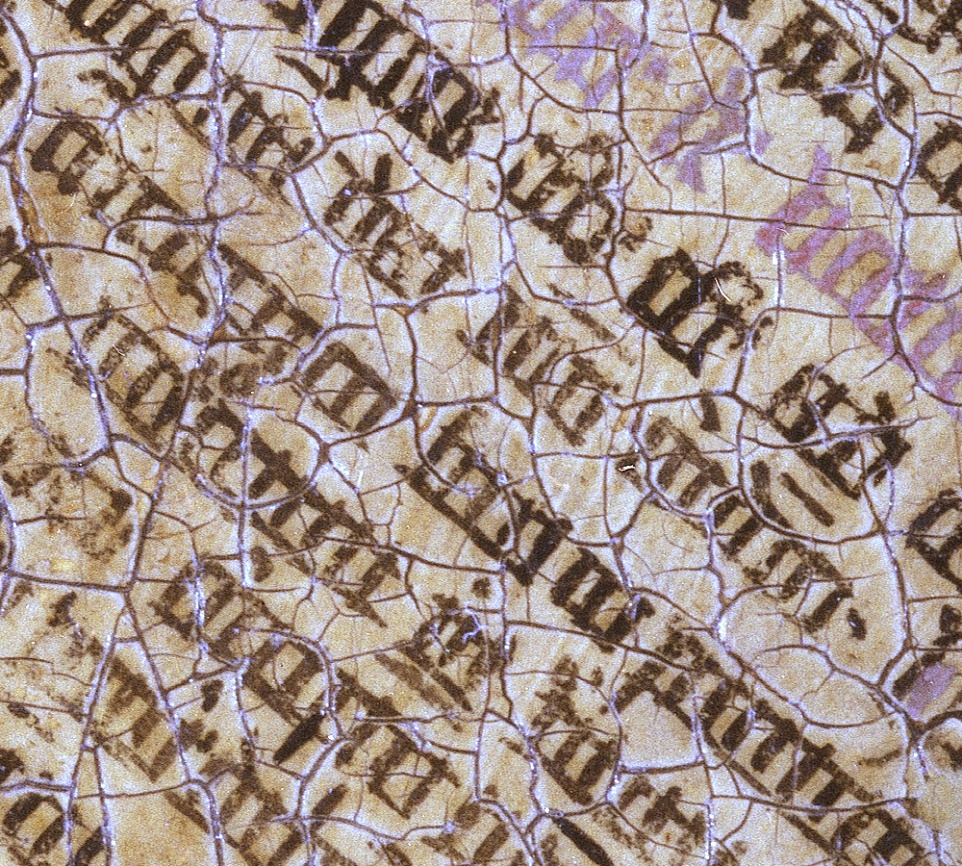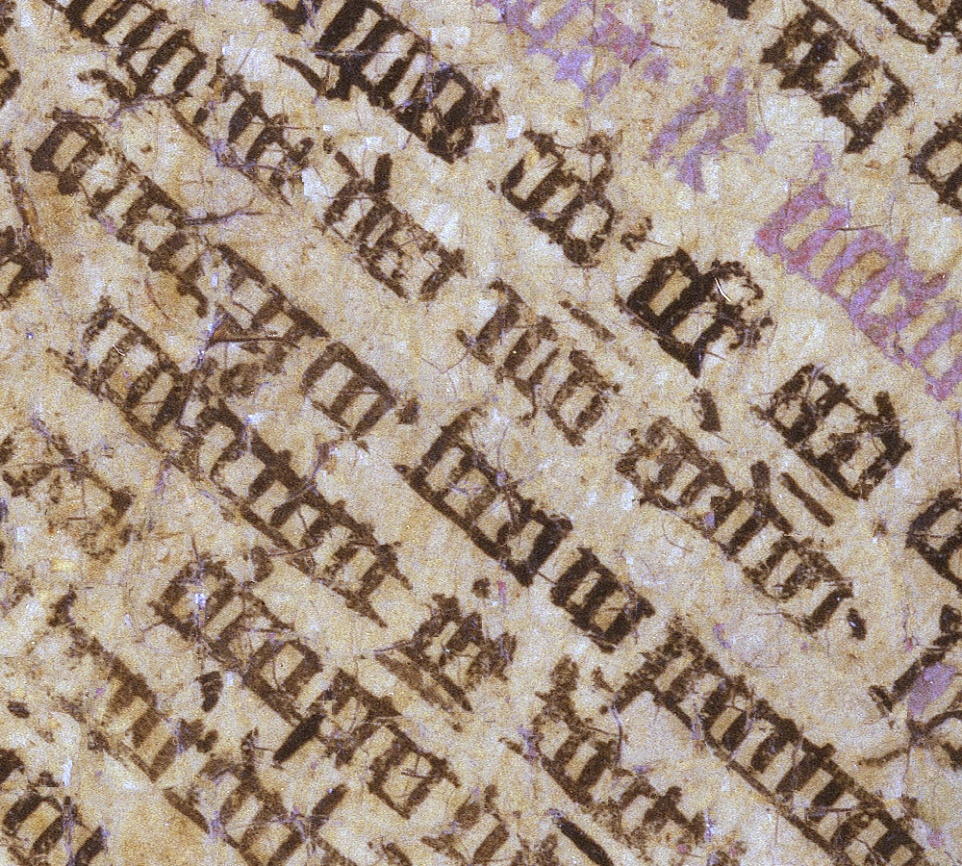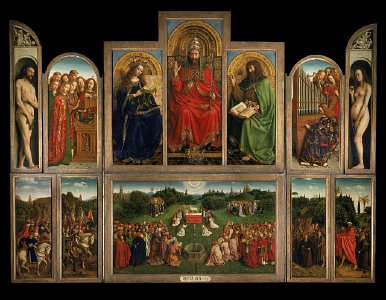This project includes interdisciplinary work between image processing specialists, mathematicians and art scholars on virtual restoration and analysis of art work. It is conducted in collaboration with Vrije Universiteit Brussel, Department of Art, Music and Theater Sciences of Ghent University, The Flemish Academic Center for Science and Arts (VLAC) of the Royal Flemish Academy (KVAB) and the Mathematics Department, Duke University, USA. Our case study is the Ghent Altarpiece or the Lam Gods, a polyptych, dated by inscription 1432, painted by Jan and Hubert van Eyck.
Topics
Virtual restoration of art work
Our goal is to approximate how the painting looked like before ageing and to aid art historical and palaeographical analysis. In order to achieve this, we developed crack detection and inpainting tools. In particular, we are developing innovative and context-aware patch-based inpainting methods to achieve correct and visually pleasing crack filling result. For more information please visit digital image processing on art work home page.
 |
 |
| Original image with cracks | Virtual restoration result |
References:
T. Ruzic, B. Cornelis, L. Platisa, A. Pizurica, A. Dooms, W. Philips, M. Martens, M. De Mey, I. Daubechies, “Virtual restoration of the Ghent Altarpiece using crack detection and inpainting”, in: Advanced Concepts for Intelligent Vision Systems (ACIVS 2011), Ghent, Belgium.
B. Cornelis, T. Ruzic, E. Gezels, A. Dooms, A. Pizurica, L. Platisa, J. Cornelis, M. Martens, M. De Mey, I. Daubechies, “Crack detection and inpainting for virtual restoration of paintings: the case of the Ghent Altarpiece”, Signal Processing (accepted)
Material representation in art work
Regarding this topic, our goal is to develop image analysis techniques to analyze magnificent optical effects and realism and "beauty" of material representation by the painter. These techniques can then be applied to quantify specific styles of different artists, identify artists’ hands and for forgery detection. As an example study, we are performing statistical analysis of distinctive spatial characteristics of painted pearls and beads with features extracted from spatiograms.


References:
- L. Platisa, B. Cornelis, T. Ruzic, A. Pizurica, A. Dooms, M. Martens, M. De Mey, I. Daubechies, “Spatiogram features to characterize pearls in paintings”, 2011 18th IEEE International conference on image processing, Proceedings, IEEE, 2011
